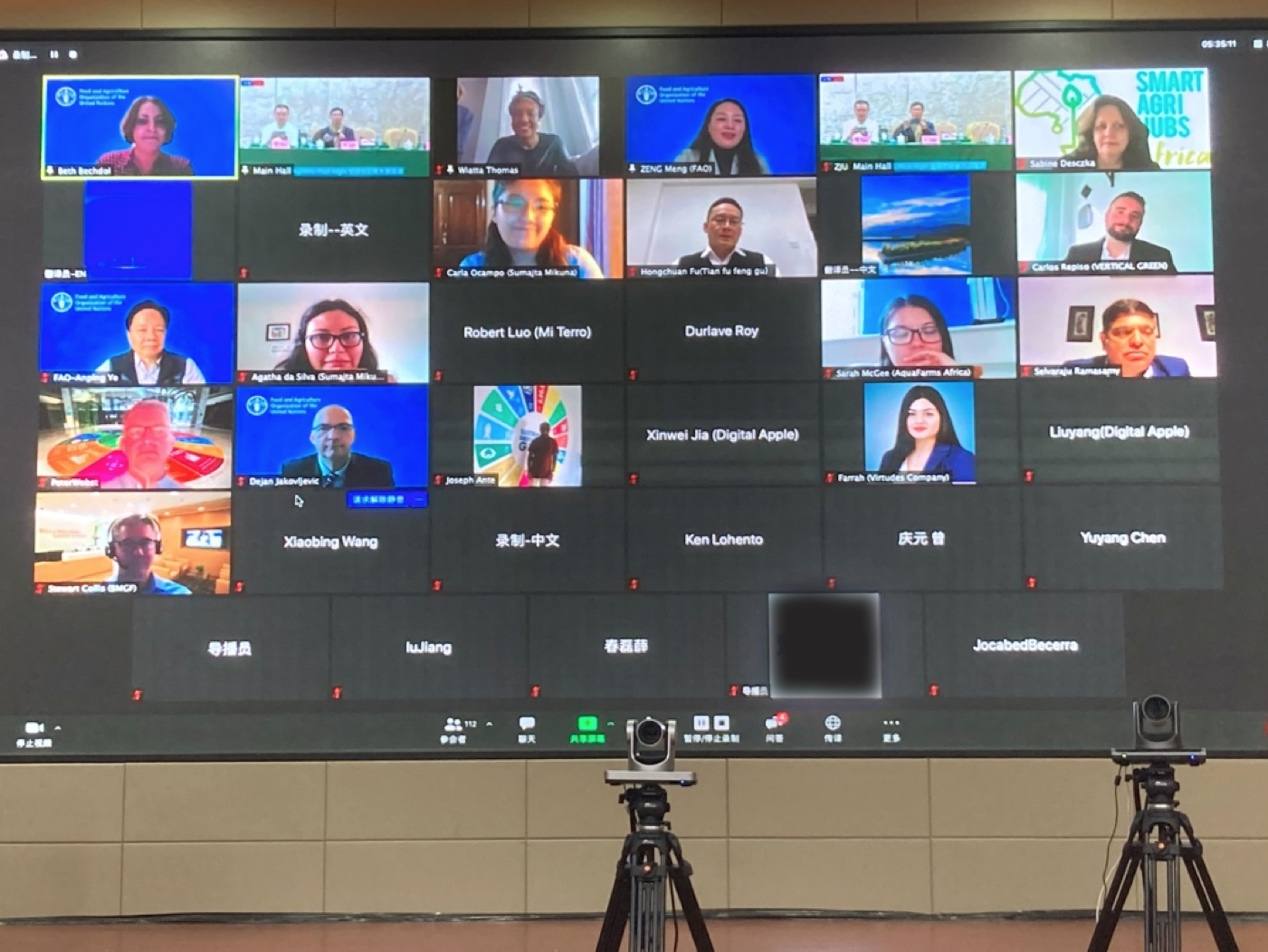By encouraging young and cutting-edge scientific and technological innovation, we will jointly help farmers around the world improve the entire agricultural industry chain.
On December 6, the final results of the “2020 Global Agricultural Maker Competition” co-sponsored by the Food and Agriculture Organization of the United Nations (FAO) and Zhejiang University and supported by Pinduoduo Officially announced.
It is understood that this competition has attracted more than 150 young digital agriculture science and technology innovation teams around the world to sign up, and 12 of them entered the finals. The jury is composed of six global interdisciplinary and interdisciplinary experts, and Beth Bechdol, Deputy Director-General of the Food and Agriculture Organization of the United Nations, serves as the chairman of the jury. This is also the world’s largest online digital agriculture technology innovation summit in the post-epidemic era in the current industry.
▲On the evening of December 5th, Beijing time, the final defense was held in the form of a remote video conference, with 12 teams facing the world The jury composed of scientists told about the background and technical plan of the group. (Photography: Zhu Biao)
After fierce competition, the “New Hybrid Entrepreneurship Project of Soilless Culture and Aquaculture” jointly formed by Liberia and American researchers won the first prize, and the “Digital Beekeeping Project” and “Mi Terro-” from China The food protein extraction and fresh-keeping film project” won the second prize, and the digital vertical planting project, the fruit and vegetable supply project, and the food e-commerce project of three entrepreneurial teams from Spain, Bolivia and Uganda won the third prize.
According to the organizer, the purpose of this competition is to discover, accelerate and promote youth-led innovative business models and digital solutions, and release the potential of innovation in the food and agriculture sectors, so as to solve the impact of the outbreak of the new crown epidemic on agricultural products problem. This is also another activity launched by the Food and Agriculture Organization of the United Nations in conjunction with Pinduoduo to support digital agriculture youth science and technology innovation following the “Duodu Agricultural Research and Technology Competition”.
Ms. Beth Bechdol, Deputy Director-General of the Food and Agriculture Organization of the United Nations, said that the application of digital agriculture in China is still in its infancy. “We are willing to work with like-minded partners to do everything we can to promote world-class digital agriculture solutions. The global landing application allows more small farmers to enjoy the agricultural technological changes brought about by new technologies.”
12 international youth teams participated to explore global digital agriculture innovation
What are the differences in the new agriculture that young people participate in?
Among the 12 youth teams that entered the finals of the “Global Agricultural Maker Competition”, 5 teams are from China, and 7 teams are from Nigeria, the United States, Bolivia, Spain, Bangladesh, Liberia/United States (cooperation) , Uganda and other countries, covering 5 continents including Asia, Africa, North America, South America and Europe.
Young people also brought unique and creative digital agriculture solutions-in China’s Shaanxi, Hunan and other places, a team deployed smart beehives to track the trajectory of bees with mobile phones; a team from Spain used remote digital remote control System, grow strawberries in containers; young people in the United States have developed smart containers to provide digital aquaculture services for Africa.
Vertical Green, a Spanish start-up company, aims to find new solutions out-of-the-box and in this way address multiple issues that will challenge food production and food logistics in the next few years.
Vertical Green founder Carlos Repiso said that they are providing new agricultural solutions based on modularity and scalability for the main strawberry producing areas in Spain. “For example, vertical planting in the strawberry park can be remotely controlled through a remote digital system, and it can also be planted in a container, which solves the problem of centralized transportation of a large number of agricultural products during the harvest period.”
At the judging site, the participating project “Mi Terro-Food Protein Extraction Cling Film” from China attracted the attention of the judges.
The project team consists of entrepreneurs, materials doctors, professors, chemists, etc. Team founder Robert introduced that they have the world’s first technology to redesign spoiled and expired milk into plastic instead of packaging materials. The film produced is cheaper than other bio-based materials, while providing similar quality to petroleum-based plastic films. “Our cost is cheaper than PVC materials and can be widely used in the fashion, medical and packaging industries.”
Wei Longbao, Director of the Institute of Food Economics and Agricultural and Commercial Management of Zhejiang University, introduced that on the evening of December 5th, Beijing time, the participating teams participated in the defense in the form of remote video and submitted innovative solutions for digital agriculture. The jury conducts fair review from multiple perspectives such as creativity, sociality, market value, and feasibility.
Finally
